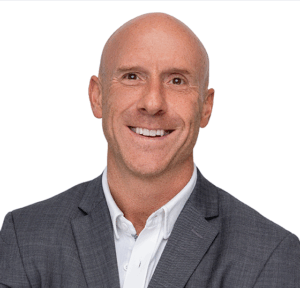New York Life is in the insurance business – but the brand also has to protect itself.
Marketers today have several metrics to juggle in their digital buys: Fraud, viewability and context top the list. But it’s not enough to monitor these metrics; brands need to take action.
Natan Cohen, New York Life’s corporate VP of media and metrics, is always thinking about new ways to integrate brand-safety measures into the insurer’s decisions about media performance and optimization.
New York Life is also working to communicate more clearly with its agency and internally about which brand-safety metrics it deems most important and how its partners should be implementing its brand-safety plans.
At the 614 Group’s Brand Safety Summit last Thursday in New York City, Cohen talked to AdExchanger about how New York Life monitors brand safety, what marketers are responsible for and how P&G’s Marc Pritchard has changed the game for marketers.
AdExchanger: What kind of brand-safety controls has New York Life historically had in place for its media buys?
NATAN COHEN: At the moment, we are only utilizing the out-of-the-box solution from Integral Ad Science, with some customization around brand-safety definitions. In the digital space, we have been doing more direct advertising, so it hasn’t been something that shows up as much. But we are stepping more into programmatic and RTB markets.
What kind of custom brand-safety controls do you have? As an insurance brand, do you shy away from or embrace “disaster” content like news coverage of a hurricane?
For the most part, we stay away from news and politics entirely. We tend to stay away from even things like NASCAR, where a crash could happen. We don’t want to appear opportunistic.
We are focused on driving brand preferences and consideration, so we don’t have the same pressure. We are not a retail brand that needs to drive X number of leads or people in the store. When you need scale in a short period of time, you tend to pull back on brand-safety issues.
What impact has P&G’s Marc Pritchard made as he’s gone to bat for marketers and rallied the industry to clean up the supply chain?
AdExchanger Daily
Get our editors’ roundup delivered to your inbox every weekday.
Daily Roundup
It’s great when major brands take a stand on an issue that we all know as brands we need to solve. When you have that much clout in the marketplace, you can push that issue the way most brands, including ours, can’t. We should not get in the way of that – but we may not be able to operate the same way in the short term.
What is a brand-safety KPI, and what does that mean to New York Life?
A brand-safety KPI can be a couple of things. It can be more of a tactical KPI, [such as] the percent of content the media attempted to display, but has been blocked because it’s not brand-safe. And it can be a more strategic KPI, [like] implementing a process by which brand-safety settings are consistently reviewed and adapted to today’s business.
What do you think is the role of the marketer vs. agency vs. platform vs. publisher in ensuring that the advertiser message is delivered in the appropriate context?
Advertisers now have very specific guidelines and data to hold sellers accountable and adjust their budgets accordingly when there are compliance issues. Overall, the brand’s role is to look at brand safety beyond the normal content categories everyone wants to avoid, like adult or violent content, and establish a set of brand-safety guidelines and content restrictions it feels best protects its brand and aligns with its core values.
If the marketer is setting the agenda and holding everyone accountable, then what’s the role of the agency, platform and publisher?
The agency’s role is to work with brands to help them understand the impact these restrictions can have on scale, to come up with a plan to mitigate any scale issues and to seek out distribution partners that align with the core values and brand-safety guidelines of the client.
Publishers have a challenging role, [which is] ensuring ads display in the appropriate context, because of the ad rotation and when an advertiser’s ad will be called to serve. However, where possible, publishers should be avoiding categories within their site where advertiser-deemed inappropriate content exists to lower exposure risk. This requires a well-designed site and proper site management on the publisher’s end.
Platforms are acting as the buyer and they need to ensure that their buying strategies align with the brand-safety guidelines established by the advertisers.
Brand-safety concerns seem to be causing a backlash against the “long tail” of the internet. Some advertisers have been able to cut many sites without impacting reach. What is the future of the long tail?
If you can solve the brand-safety issue, the long tail will continue to be valuable. If the long tail is where we are seeing fraud, viewability and content concerns, [it] mitigates the value of the long tail. For a brand like us, the long tail gets less scale. But if it’s a user we want and an environment we are OK with, that’s fine.
What area of brand safety are you focusing on most going into 2018?
Understanding how a change in any of those [brand-safety] numbers impacts performance, specifically with viewability. We don’t use viewability as an optimization metric now, but we know it can impact performance.
And we have to do a better job educating internally about the challenges of brand safety. We have been working with IAS for years. But because the issues weren’t as prevalent, it wasn’t a conversation we thought we needed to have with senior management. Because the environment has changed, and it’s more on their radar, now we are having those conversations.
This interview has been edited and condensed.















